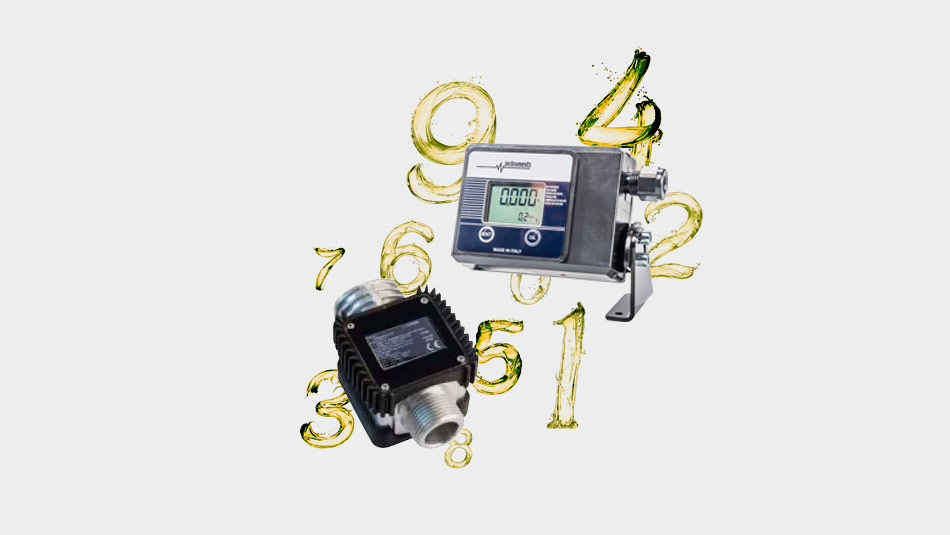What are the advantages of a pulse generator meter with a display unit?

Everything you need to know about pulse generator meters with display
These meters are a solution for the remote control of fluid distribution, regardless of its viscosity. They enable numerous data to be gathered: the volume transferred, the flow rate, the speed, etc. Why install a pulse generator meter for industrial or domestic use? How do they work? What are their advantages? All the answers to your questions.
Need advice?
Our team of experts is here to help you.
You can contact us via a simple click:
What is a pulse generator meter with display?
It is important to understand the difference between a volume meter with onboard display, whether mechanical or electronic with an LED screen, and a pulse generator meter.
Volume meters enable the measurement of any withdrawal of a liquid from a system under pressure.
The individual drinking water meter is a good example of this for domestic use. It is directly connected to the water network piping.
Although the pulse generator meter is also a measuring system, its operating principle is different. Whether they are meters for water, thermal energy or gas, these smart systems are capable of communication and thus enable meters to be read remotely.
The most famous type of pulse meter is the Linky meter. This electrical device is different from the meters used for liquids. But it is a good example to understand its role: this meter measures electricity consumption in kWh and enables the electricity provider to read it from a distance to easily establish your electricity bill. This numbered meter is also an advantage for users, who can regulate their consumption according to, for example, peak and off-peak hours.
Operating principle
These meters operate on the physical principle of eddy currents. The pulse is generated by the flows of fluid that induce changes in mass and variations in electromagnetic fields.
There are different ranges of pulse generator meters: those with oval gears and those with impellers.
At each rotation of the meter's impeller or gear, the sensor generates a pulse that corresponds to the flow or the volume of water or liquid pumped. A modulation disc then transfers the data by a radio or pulse module.
The most common is the dry dial meter with 360° rotation. It is incorporated into an electronic reed bulb (ILS) type housing for data transmission. It is equipped with a perfectly watertight roller counter, a gear and a needle fitted with a magnet.
Pulse generator meters can be used with different fluids. Although the choice depends on their use, it is important to consider the maximum pressure, in bars, for good load distribution and to opt for a suitable flow range for the most precise measurement. With water, it enables the volumes and flow speed to be measured.
The particularity of meters with a display
This type of sub-meter only serves as a display, but it offers numerous possibilities for connection.
The device thus transmits the pulses directly to a remote controller. They run on a lithium battery power supply. If they are connected to a computer, the latter can supply the energy necessary for their operation.
How do you connect a pulse generator meter?
These compact devices are quite easy to install. It is possible to place them horizontally on the main meter or on the piping to carry out precise measurements over a specific section. Unaffected by vibrations in the piping, they can detect the direction of the flow. Nevertheless, the installation of a check valve may be necessary.
Connection to a remote measuring station is made via the installation of a cable or duct. Variations in voltage (kVA) are detected and converted into volumetric values.
When connecting, ensure that the equipment connected is designed to support a direct current.
What are the advantages of this type of system?
Although this type of meter can recover consumption data remotely, they are used for various applications.
A metrological tool for billing or monitoring
They can, for example, monitor the water consumption of an installation
as the meter can be read remotely. They provide an excellent means to ensure the seal of an installation and to detect leakage.
For fuel distributors, thermal energy pulse generator meters are used in service stations, for example. They enable the reception of data and facilitate direct reading for immediate invoicing.
A reliable tool for the transfer of remote data
In hazard areas, the transmitter can be associated with the ATEX meters used for explosive fluids: solvents, lubrication oil, petrol, diesel, natural gas, butane, etc. Pulse generator meters enable the collection of required information with no need to go on site.
Programmable systems
Another advantage of this type of system: to control the start or interruption at a given time or at a given volume.
These controllers are thus a basic element for an installation with preselection. They can be combined with a softener valve or an electromagnetic dosing pump. Whether for industry or for domestic use, they provide an efficient means to handle certain fluids.
The pulses provide information concerning the liquid flow volume and enable the dosing of the exact quantity of treatment to administer.
Submeters to measure temperature
These meters, which generally possess a brass body, are used on public networks upstream of water meters. They enable real consumption data to be read remotely according to the temperature: cold water / hot water.
Used in many sectors, pulse generator meters enable various data on the liquids to be gathered. A wide range of connections is possible to meet all needs and requirements: connection to a PLC, a printer, a display, radio module, Modbus or to a softener valve.
